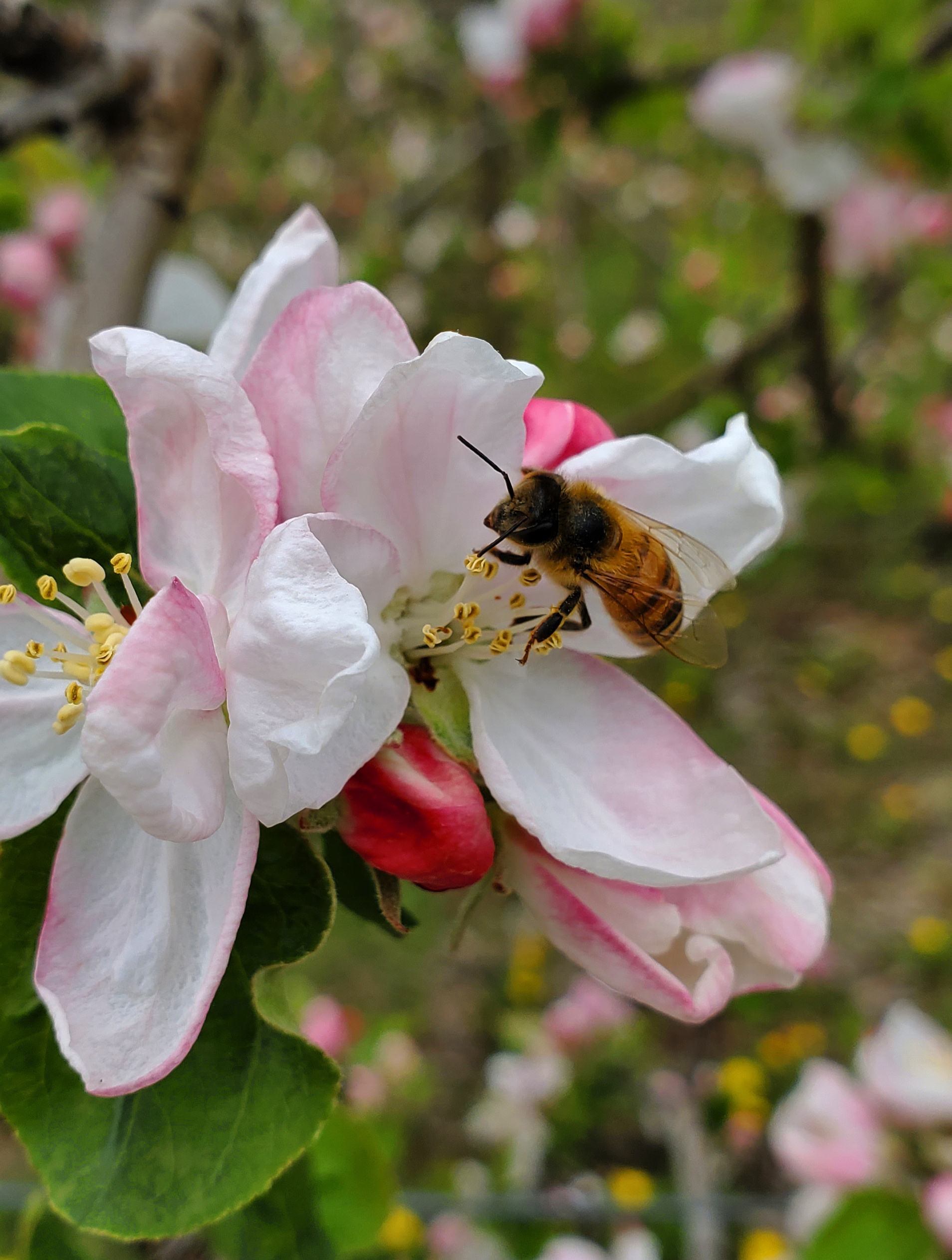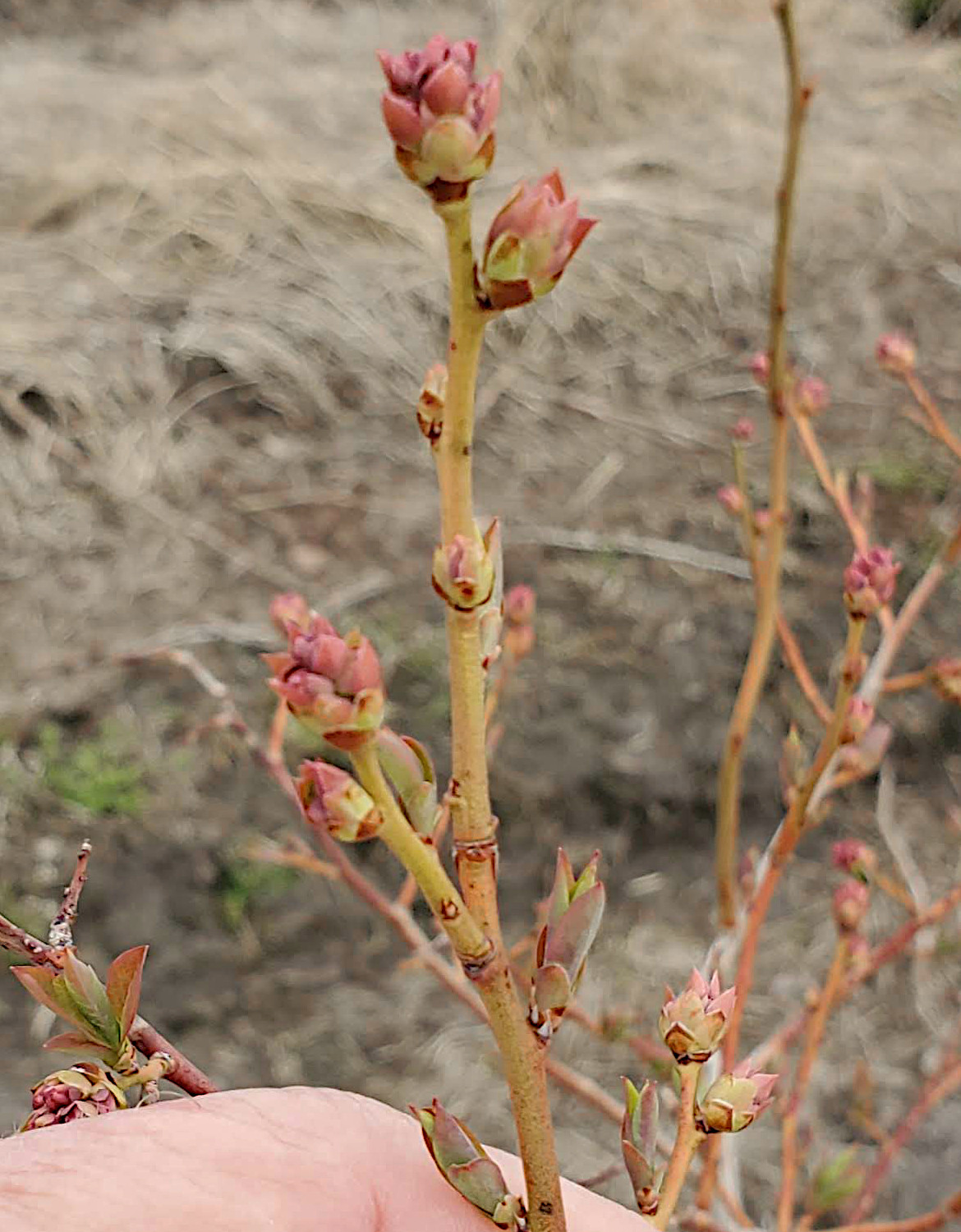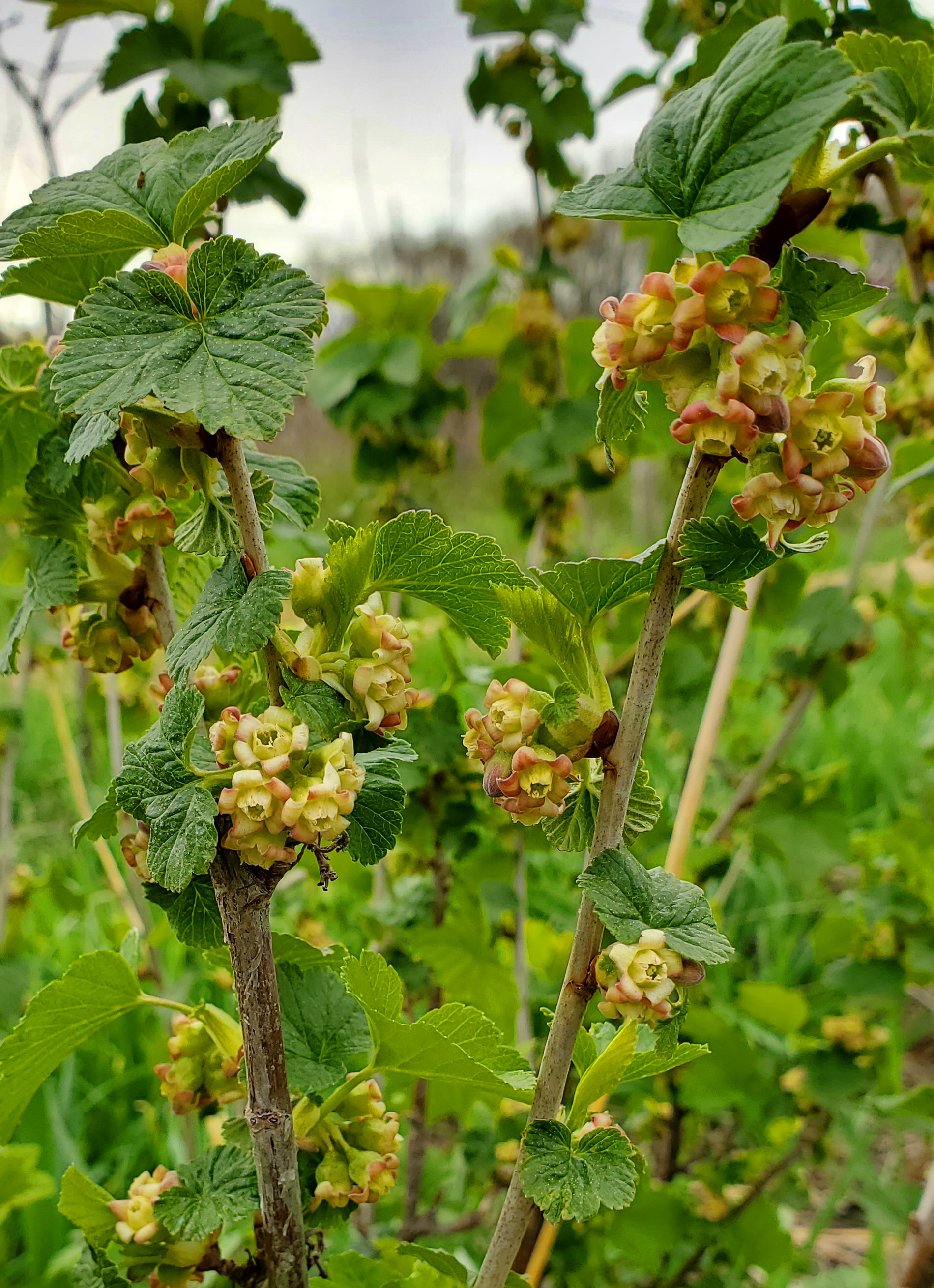Southwest Michigan fruit update – April 20, 2021
Development was slow this past week. This week’s forecast is for a hard freeze in southwest Michigan.

Weather
Last week started cool. High temperatures were in the 40s for much of the week. Lows were in the 30s. Saturday and Sunday mornings dropped below freezing, and much of the area saw upper 20s both mornings. A storm system entered the area Monday afternoon, April 19, bringing cooler temperatures for the next three days. This system is forecasted to bring rain and up to an inch of snow on Monday and Tuesday. Freeze watches and warnings are posted for the entire southwest part of Michigan on Tuesday, Wednesday and Thursday mornings. Once the system passes, highs will rise to the mid- to upper 50s for the rest of the week. The best chances for precipitation are on Tuesday and over the next weekend.
Soil temperatures have fallen into the mid-40s in many areas. With the cold week, we picked up very few growing degree days (GDD) last week: 25 GDD base 42 and 7 GDD base 50.
|
Southwest Michigan GDD summary from March 1 - April 18, 2021 | |||
|---|---|---|---|
|
Station |
GDD 42 F |
GDD 45 F |
GDD 50 F |
|
Benton Harbor (SWMREC) |
328 |
256 |
158 |
|
Lawton (Lawton) |
333 |
259 |
159 |
|
Fennville (TNRC) |
275 |
210 |
125 |
|
Average for the SW region |
324 |
252 |
155 |
|
Average last week |
299 |
236 |
148 |
Frost/freeze information
April began with a classic radiation freeze on Friday, April 2, with low temperatures dropping into the mid- and upper teens. The coldest temperatures were along the I-94 corridor (12-15 degrees Fahrenheit). There were warmer temperatures to the south. Damage has been observed in various tree fruit including apricots, peaches and apples with cherries the most impacted.
Freeze watches and warnings have been posted for the coming week for the entirety of southwest Michigan. Wednesday morning is forecast to be the coldest with lows at 22-28 F. The coldest areas are expected to be away from the lake. Most tree fruit are at or near bloom. They can be damaged by temperatures in the mid- to upper 20s. Many small fruits can be damaged by temperatures in the low to mid-20s.
Tree fruit
Fruit tree development has not moved much since last week due to cool weather. The threshold for tree fruit damage is starting at 28 F, with severe damage below 25 F. We are seeing some damage from the April 2 freeze to the most advanced flower pistils in low sites for most fruit crops. Here is a link to tree fruit bud critical temperatures and another with pictures. With the upcoming cold expected mid-week, the wet soils will help to moderate temperatures.
Oriental fruit moth biofix occurred approximately two weeks ago, but little significant moth flight has occurred yet. The biofix for this insect can be restarted once warm weather and new flights have begun. Mating disruption for moth species, especially for oriental fruit moth should go out soon in order to be in time for the first generation. There are a few weeks before codling moth and leafroller biofixes. Green fruitworm larvae were detected last week feeding on tree fruit blossoms.

Apricots are in the shuck with much of the petals dropped. Brown rot is still a concern when the weather warms up as the pathogen can colonize the lingering flower tissue and establish a colony for later infections.
Peach and nectarine are in an extended bloom period, ranging from 50% to full bloom. Aging blossoms are less efficient at setting fruit. Freeze damage in peaches is becoming easier to see, but crop prospects are still good. Oriental fruit moth biofix was predicted April 6-8 depending on site, but trap catches are generally very low, and biofix will likely be reset when flight resumes with warmer weather.
In cherries, tarts are at early bloom and sweets are generally at full bloom to early petal fall. The freeze on April 2 hurt mainly sweet cherries and caused damage to tart cherries at some sites, leaving others nearby untouched. We are past the window when copper sprays can be safely applied to sweet cherries for bacterial canker, but copper can still be used on tart cherries. Cherry leaf spot infections are possible once bract leaves are expanded. The Enviroweather model for this disease has been adjusted to include bract leaf development, with infection periods already being predicted in the southwest region.
In plums, Japanese plum buds are at full bloom to petal fall. European plums are at full bloom. Prune out black knot and dispose of the knots by burning or removing from the orchard. Sanitation is very important in managing this disease. Black knot management and brown rot are the primary disease concerns now. Poor pollination and frost damage can increase split pit problems at harvest.
Apple buds are generally at full pink, depending on the variety. Some damage from the Good Friday freeze has been seen on king bloom and on side bloom in lower sites. Local monitoring sites showed continued apple scab ascospore catches. Weather conditions have been sufficient for one to five infection periods, with the most in the Lawrence and Lawton areas. Powdery mildew and rust are also concerns now that we are in pink.
Pears are at tight cluster to full bloom.
Small fruit
Grape buds are swollen. Concord and other earlier hybrid varieties are still at early bud swell (doeskin) and late swell (as the buds show green color) in southern locations. Leaves are starting to separate in some locations. Most vinifera are at early bud swell. Climbing cutworms and flea beetles can be a concern as buds swell and begin to open, especially as growth slows down with the cooler temperatures.
Blueberry flower buds have burst. They are at tight cluster. Vegetative buds are almost an inch long and leaves are starting to unfold. See blueberry growth stages for descriptions and estimates of the critical temperatures for each bud stage. With the rain forecast for this week, growers will want to protect against mummy berry. Green tissue is out and mummy berry mushrooms (apothecia) are out. Freeze-damaged leaves are more susceptible to infection and rainy conditions later this week could be mummy berry shoot strike infections. Apply fungicides to protect the green shoots. You still have time to apply copper, Sulforix or lime sulfur products to suppress early season diseases, especially early twig blights.

In strawberries, most new leaves have emerged from the crown and flower trusses are emerging from the crown. In the soil, the flower buds are protected from the cold. It is unlikely that sprinklers will be necessary to protect the flowers. Sprinklers for freeze protection should be out and tested to protect against freezes after the flowers emerge. See “Frost/Freeze Protection in Strawberry” from Virginia Cooperative Extension. Overwintering mulches should be removed and raked between the rows after this week’s freezes.
Bramble leaves are opening up. We are past the time for dormant sprays. In summer bearing raspberries, last year’s primocanes should be headed (cut back) to the desired height and any remaining floricanes from last year should be removed. Fall bearing raspberry primocanes are emerging from the ground.
Currants are at full bloom.

Miscellaneous crops
Hops are emerging from the crown. Most varieties have shoots up to 18 inches long and several leaves opened. Some sites have begun stringing. This week’s freezes will kill off many of the early shoots. Wait until freeze damage can be evaluated to decide if any pruning is necessary.
Chestnut buds are swollen.
Hazelnut leaves are out.
Saskatoons are beginning to bloom.
Cranberries are still dormant.
Upcoming meetings
Our regular Southwest Michigan Monday Fruit IPM Updates are available online. You need to register to receive the Zoom link and password for these meetings. The webinars are free and one pesticide applicator credit is available for each meeting. We had over 70 growers attending our Monday meetings last year.
Related articles
- Freeze damage depends on tree fruit stage of development
- Using Enviro-weather’s regional overnight temperature report during cold events
- Treat peach leaf curl now
- Managing bacterial canker in sweet cherries: What are the options?
- Early insect control with horticultural oils
- Dormant oil for tree fruit pest management in 2015
- Scouting and management of mummy berry in blueberries
- Mummy berry has returned, and new products are available for control
- Monitor grape buds for climbing cutworm and flea beetles
- Frost, Critical Temperatures, and Frost Protection
- What can fruit growers do if a freeze is coming?



 Print
Print Email
Email
